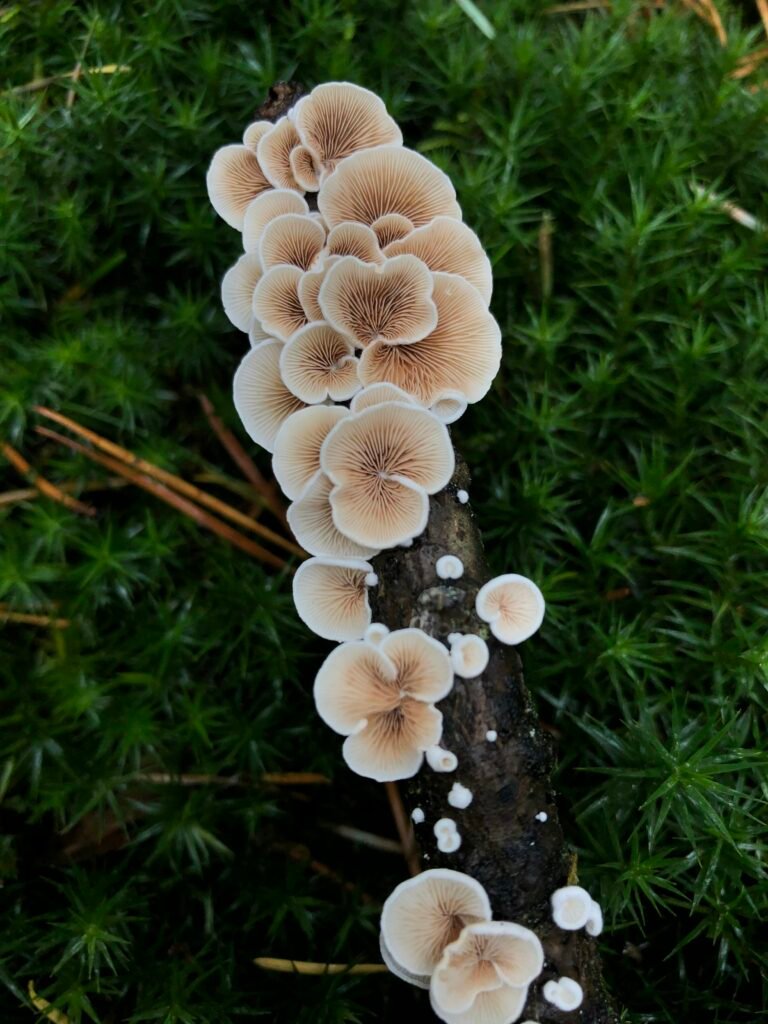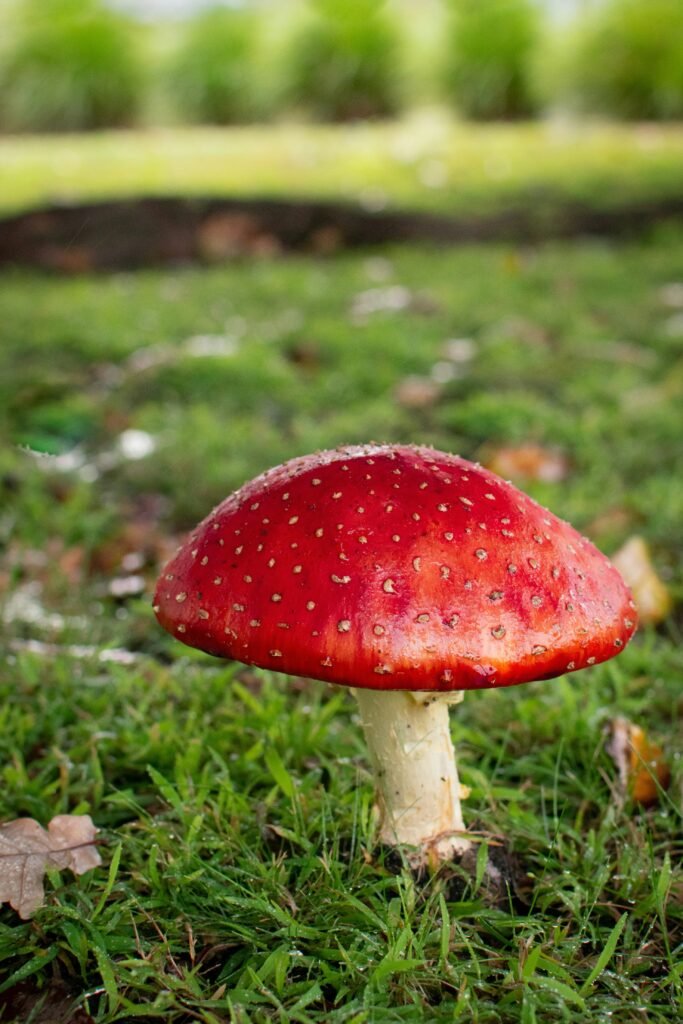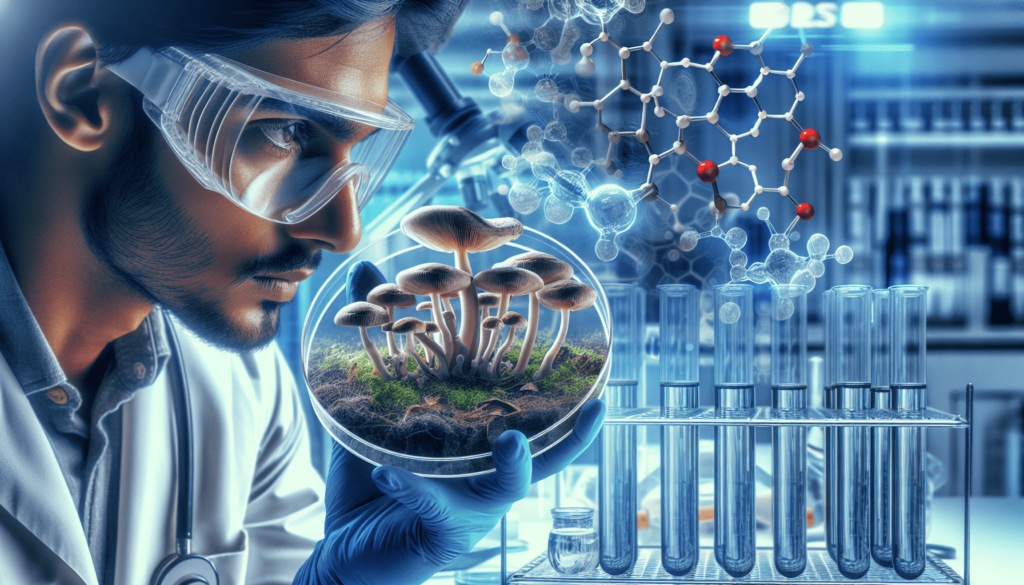Imagine you stumble upon a mysterious-looking mushroom while hiking in the woods. Curiosity gets the better of you, and before you know it, you’ve taken a bite. Panic sets in as you rush to find answers to a crucial question: is there a mushroom antidote? In this article, we will explore the possibility of such a remedy and uncover the fascinating world of mushroom toxins and their potential cures. Brace yourself for an enlightening journey as we navigate through the intricate relationship between mushrooms and antidotes.

Introduction
Have you ever wondered if there is a mushroom antidote? Mushrooms, while delicious and a staple in many cuisines, can also pose a significant risk if consumed irresponsibly. mushroom poisoning can lead to severe gastrointestinal, neurological, hepatic, and renal symptoms, and it is essential to be aware of the types of mushroom poisoning, their symptoms, and the available treatment options. In this comprehensive article, we will delve into the world of mushroom poisoning, explore potential antidotes, discuss their effectiveness, and also highlight the challenges in developing a universal mushroom antidote.
What is a mushroom antidote?
Before we delve into the specifics of mushroom antidotes, let’s understand what they are. A mushroom antidote refers to a substance or treatment that can counteract the toxic effects of mushroom poisoning. Depending on the type of mushroom poisoning, different antidotes may be required to neutralize the harmful substances found in mushrooms. It is vital to identify the specific type of mushroom poisoning to ensure the most effective treatment is administered promptly.
Types of mushroom poisoning
Mushroom poisoning can be caused by various toxins present in different species of mushrooms. Understanding the different types of mushroom poisoning is crucial in determining the appropriate treatment. Here are some of the most common types:
Amatoxin poisoning
Amatoxin poisoning is caused by ingestion of mushrooms containing amatoxins, such as the Amanita phalloides (Death Cap) or Amanita ocreata (Destroying Angel). These toxins primarily affect the liver and kidneys and can result in severe organ damage or even death if not treated promptly.
Gyromitrin poisoning
Gyromitrin poisoning occurs when mushrooms containing gyromitrin, such as false morels, are consumed. Gyromitrin is converted into a toxic compound called monomethylhydrazine (MMH) in the body, which can lead to symptoms ranging from gastrointestinal distress to severe central nervous system effects.
Ibotenic acid and muscimol poisoning
Certain mushrooms, such as the Amanita muscaria (Fly Agaric) and Amanita pantherina, contain ibotenic acid and muscimol. Ingesting these mushrooms can cause hallucinogenic effects, along with other symptoms like dizziness, sweating, and altered mental state.
Psilocybin poisoning
Psilocybin poisoning occurs when mushrooms containing psilocybin, commonly known as magic mushrooms, are consumed. Psilocybin is converted into psilocin in the body and can lead to hallucinations, altered perception, and changes in mood.
Coprine poisoning
Coprine poisoning is caused by consuming Coprinus spp. mushrooms along with alcohol. This combination can result in symptoms such as flushed skin, rapid heartbeat, nausea, and vomiting.
Symptoms of mushroom poisoning
The symptoms of mushroom poisoning can vary depending on the type of toxin ingested. Here are some of the common symptoms associated with mushroom poisoning:
Gastrointestinal symptoms
Gastrointestinal symptoms include nausea, vomiting, abdominal pain, diarrhea, and in severe cases, bloody stools. The onset of these symptoms can vary, ranging from a few hours to several days after consuming the mushrooms.
Neurological symptoms
Neurological symptoms can include dizziness, confusion, altered mental state, hallucinations, seizures, and even coma. These symptoms may be present in various types of mushroom poisoning, depending on the specific toxins involved.
Hepatic symptoms
Hepatic symptoms primarily occur in amatoxin poisoning and can include jaundice (yellowing of the skin and eyes), dark-colored urine, and pale stools. The liver is particularly vulnerable to damage from amatoxins, leading to potential liver failure if left untreated.
Renal symptoms
Some types of mushroom poisoning, particularly those caused by amatoxins, can affect the kidneys. Renal symptoms may include decreased urine output, blood in the urine, and signs of kidney dysfunction.

Treatment options for mushroom poisoning
When it comes to treating mushroom poisoning, prompt medical intervention is crucial. The specific treatment options may vary depending on the type of mushroom poisoning and the severity of the symptoms. Here are some common treatment approaches:
Gastric decontamination
Gastric decontamination involves removing any remaining mushroom material from the stomach to limit further absorption of toxins. This may include inducing vomiting, administering activated charcoal, or performing gastric lavage (stomach pumping).
Supportive care
Supportive care aims to manage the symptoms and provide necessary medical support. This may include intravenous fluids to maintain hydration, medications to control nausea and vomiting, and management of any complications that may arise.
Specific antidotes
In some cases, specific antidotes may be administered to counteract the effects of mushroom poisoning. These antidotes target the specific toxins involved in each type of poisoning. Let’s explore some potential mushroom antidotes in the following section.
Potential mushroom antidotes
While there is no universal mushroom antidote, several substances have shown promise in mitigating the effects of different types of mushroom poisoning. Here are some potential mushroom antidotes:
Silybin
Silybin, a compound found in milk thistle, has been studied for its potential hepatoprotective properties. Research suggests that silybin may help counteract liver damage caused by amatoxins, offering a potential antidote for amatoxin poisoning.
N-Acetylcysteine
N-Acetylcysteine (NAC) is an antioxidant commonly used to treat acetaminophen (paracetamol) overdose. Studies suggest that NAC may also be effective in certain cases of amatoxin poisoning, potentially protecting the liver from further damage.
Silibinin
Silibinin, another component of milk thistle, has shown promise in countering the effects of amatoxin poisoning. This compound has exhibited hepatoprotective properties and may help reduce liver damage caused by amatoxins.
Psilocybin metabolism inhibitors
In the case of psilocybin poisoning, medications that inhibit the metabolism of psilocybin into its active form, psilocin, have been explored as potential antidotes. These medications could potentially prevent or reduce the hallucinogenic effects associated with psilocybin poisoning.
Thioctic acid
Thioctic acid, also known as alpha-lipoic acid, is an antioxidant that has exhibited some protective effects on the liver. While its effectiveness as a mushroom antidote is not yet proven, it has shown potential in mitigating liver damage in various contexts.

Effectiveness of mushroom antidotes
The effectiveness of mushroom antidotes varies depending on the specific antidote and the type of mushroom poisoning. Here is a brief overview of some studies conducted on potential mushroom antidotes:
Studies on silybin
Several animal and cell studies have shown silybin’s effectiveness in amatoxin poisoning. However, more research is needed to determine its precise dosage, administration methods, and potential interactions with other medications.
Studies on N-Acetylcysteine
NAC has been extensively studied in cases of acetaminophen overdose, but there is limited clinical evidence regarding its effectiveness as an antidote for amatoxin poisoning. Further research is required to establish its specific role in mushroom poisoning treatment.
Studies on silibinin
Silibinin has shown a promising hepatoprotective effect in various studies, including those focused on amatoxin poisoning. However, further research is needed to determine its optimal dosage and effectiveness in human subjects.
Studies on psilocybin metabolism inhibitors
Research on psilocybin metabolism inhibitors as a potential antidote for psilocybin poisoning is still in the early stages. While there are ongoing studies exploring the efficacy of these inhibitors, no definitive conclusions have been reached so far.
Studies on thioctic acid
Thioctic acid has shown some hepatoprotective properties in different contexts, including liver disease. However, its effectiveness as a mushroom antidote specifically requires further investigation through clinical trials and human studies.
Challenges in developing a universal mushroom antidote
Developing a universal mushroom antidote poses significant challenges due to the diverse range of toxins found in different species of mushrooms. Each type of poisoning requires specialized treatment, making it difficult to create a single antidote that can effectively counteract all possible mushroom poisonings. Additionally, the limited understanding of certain mushroom toxins and their mechanisms of action adds further complexity to the development of a universal antidote.

Prevention and caution
While the quest for a universal mushroom antidote continues, prevention and caution remain the best defense against mushroom poisoning. Here are some crucial preventive measures:
Avoiding wild mushroom consumption
If you are not an experienced mycologist or a trained mushroom forager, it is best to avoid consuming wild mushrooms altogether. Many edible mushrooms have toxic look-alikes, and a misidentification can have severe consequences.
Proper identification of edible mushrooms
If you are knowledgeable and experienced in mushroom foraging, ensure you have proper identification guides and consult with experts to correctly identify edible mushrooms before consumption. Remember, even experts can make mistakes, so it is crucial to double-check every identification.
Education and awareness
Increasing public awareness about the risks associated with mushroom poisoning is vital. Understanding the potential dangers and spreading knowledge about safe mushroom consumption practices can help prevent accidental poisonings.
Conclusion
While a universal mushroom antidote has yet to be developed, significant progress has been made in identifying potential antidotes for specific types of mushroom poisoning. The effectiveness of these antidotes varies depending on the toxins involved and further research is needed to establish their precise role and dosage in treatment protocols. In the meantime, prevention and caution remain the primary means of avoiding mushroom poisoning. By avoiding wild mushrooms unless you are a trained forager, properly identifying edible mushrooms, and promoting education and awareness, we can mitigate the risks associated with mushroom consumption. Stay safe, and remember to always exercise caution when it comes to mushrooms!

